Reading Comprehension Strategies (part 2)
This post may contain affiliate links.
Good readers use specific strategies; strategies that kids can learn and that you can teach your kids. Help your kids become better readers, readers who comprehend what they are reading, when you read with them – from beginning readers to more advanced readers.
Yesterday, we discussed knowing if you do or do not comprehend what you’re reading — the first and most important strategy. Go here to read that full post.
Reading Comprehension Strategies
1. Monitor understanding
“I know / don’t know what’s happening.”
This is the FIRST and most important strategy!
2. Connect to the book
“That reminds me of . . . ”
When we read, we put ourselves in the characters shoes, compare the characters to people we know and other stories we read. Connecting is an important reading strategy that adults often take for granted.
3. Determine what’s important
Interesting vs. important
Good readers know the difference between what is important — the big plot lines – and the interesting details.
4. Make pictures in your head
“Can you see the movie in your head?”
Good readers use all their senses to imagine the story. Visualization plus your other senses – hearing, tasting, feeing, smelling.
5. Ask questions
“I wonder . . . ”
Good readers ask basic questions like “I wonder why the character just did ________?” or “I wonder what happened ___________?” They ask questions which help them make inferences (see below) and predictions.
6. Make inferences (like drawing conclusions)
“I can make a good guess / a prediction based on what the author wrote . . . ”
“I can tell that ____________ by using the author’s clues.”
An inference is when you figure out what isn’t specifically said but implied.
For example, if you read about a wet boy in a bathing suit carrying a towel, you can make an inference that he just went swimming. Or you read that someone was scowling, you can infer that she might be feeling worried, mad, or upset.
7. Synthesize information
“If I put together all the information, I can now say that _______________.”
This high-level thinking strategy combines what a reader has learned from the text to come up with some new thinking about it – kind of like a summary plus your own analysis. (Imagine synthesizing all those parenting books you’ve read.)
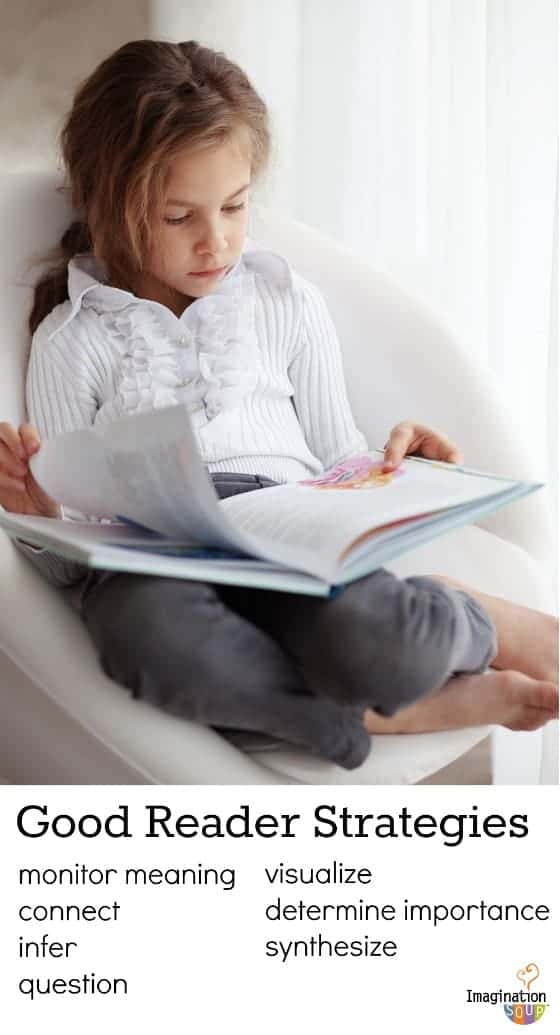
When You Read With Your Child
Guess what mom and dad? You get to do these reading comprehension strategies with your child to model them.
–> Focus on one reading strategy at a time, for several weeks at least.
–> Model the reading strategy. Say out loud when you are using the strategy. “Oh, I just made a connection to . . .”
–> Ask your child the reading strategy question from the examples above such as “Can you connect to your life in this part?”
You can do this ANYTIME your child is reading or listening to stories.
With bedtime stories.
With audio books.
(Read an audio book – it counts.)
With comic books.
(Best comic books for kids.)
With the newspaper.
With magazines.
(Read magazines and non-fiction books.)
Anything!
Now you’re probably wondering (since you’re such a good reader) about something here like — really, Melissa? I have to do this? Or what did you mean when you said . . . ?
Ask away! Let’s chat in the comments.
You Might Also Like . . .
Teach Kids to Think About Their Thinking
Best Books for Early Readers
Summarizing
Reading Apps

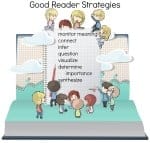

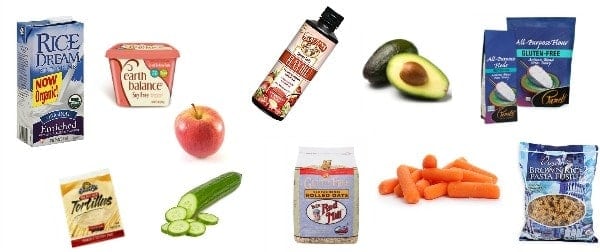
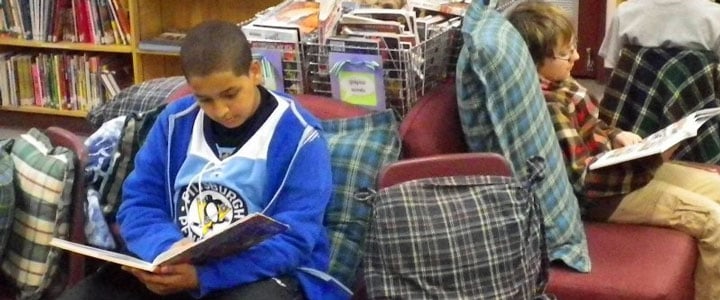
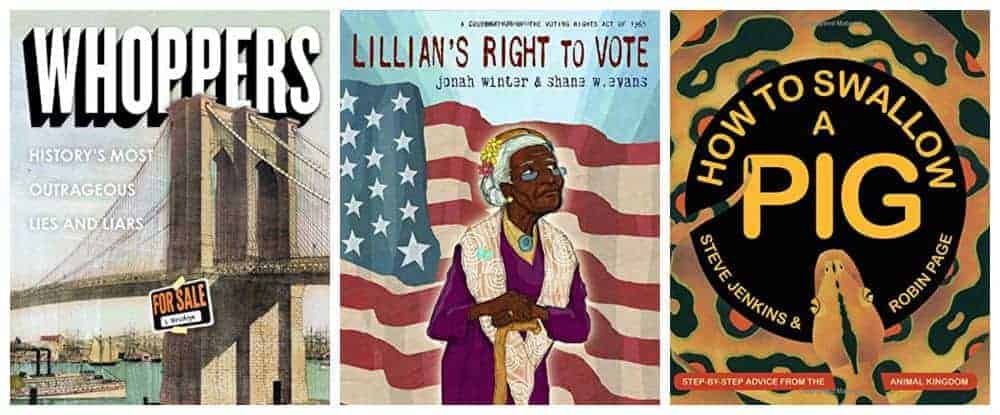
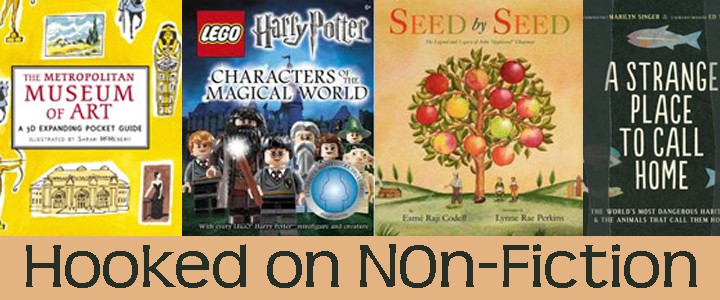
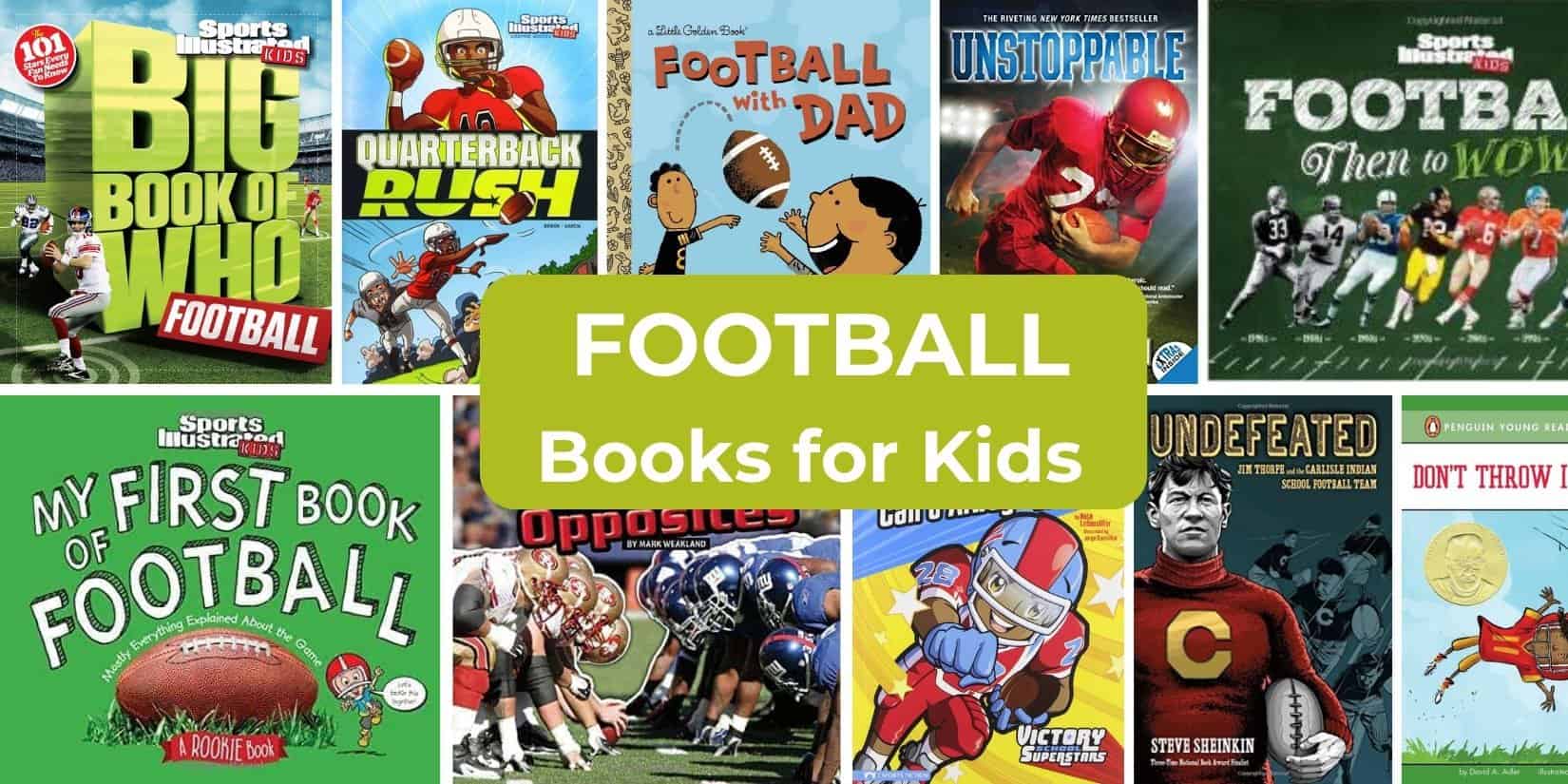
Oh my gosh! Every parent should see this post and have the guidelines with them when they read to their kids. How incredible would it be if more parents did this with their kids at home and then it was practiced at school? Reading scores would be through the roof but we would have so many more kids who would understand the nuisances of reading. Reading is the foundation for all study in school and when kids struggle it impacts their feelings about themselves and school in general.